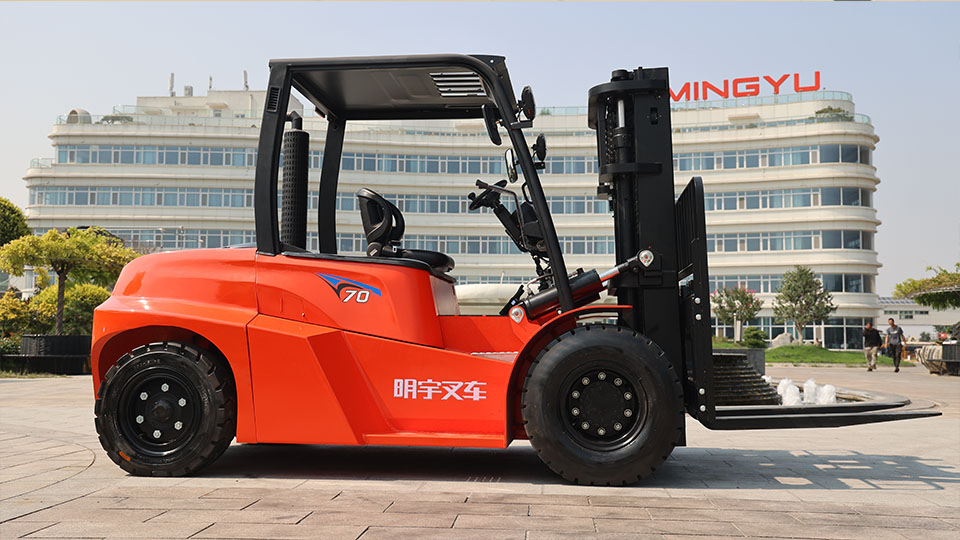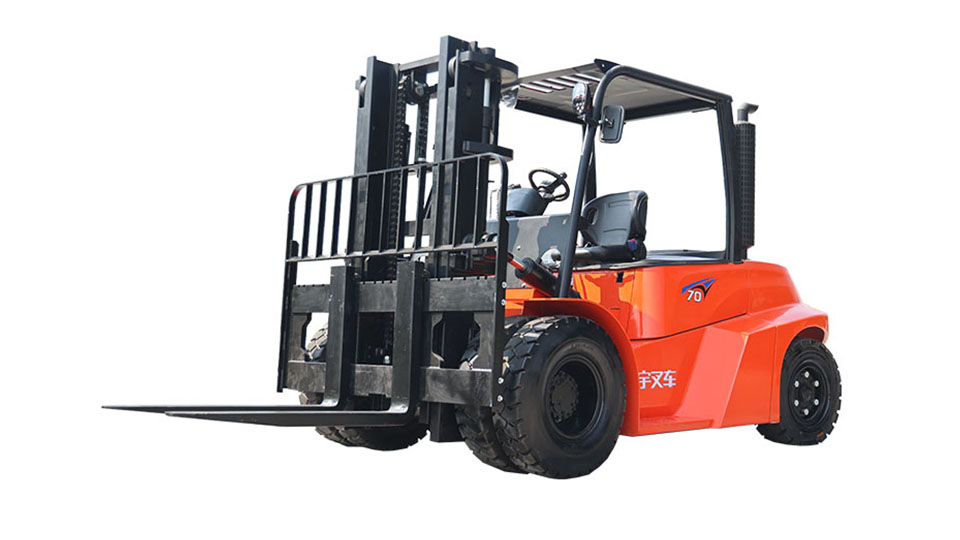
The Definitive Guide to Forklift Certification: What It Looks Like and What It Means
A forklift certification is more than just a piece of paper; it's a tangible representation of an operator's training and competence, a critical component of workplace safety, and a legal requirement under OSHA standards. While there's no single, universally mandated design for a forklift certification, there are key elements and formats that are essential for compliance and credibility. This technical article will demystify what a forklift certification looks like, what information it must contain, and the various forms it can take, from a simple wallet card to a formal certificate of completion.
1. The Three Forms of Certification: A Three-Pronged Approach

To fully understand what a forklift certification looks like, you must first recognize that the certification process itself is a three-part journey, as mandated by the Occupational Safety and Health Administration (OSHA) Standard 29 CFR 1910.178. Each stage often produces a different form of documentation.
The Certificate of Completion (Formal Instruction): This document is what you typically receive after completing the theoretical, "classroom" portion of the training. This is a crucial document, especially for those who complete their training through an online course. It signifies that the operator has successfully passed the written exam and has demonstrated an understanding of the fundamental principles of safe forklift operation. This certificate is often a larger, more formal document, suitable for a human resources file.
The Operator's Wallet Card (The "License"): This is the most common and recognizable form of a forklift certification. It is a small, durable card, similar in size to a credit card or a driver's license, that an operator can carry with them on the job. The wallet card is a convenient way for an operator to prove their credentials and for a supervisor to quickly verify their training.
The Performance Evaluation Form (The Employer's Record): This is arguably the most important document in the entire process. It is a formal record that an employer must keep on file for each certified operator. This document, often a checklist or a detailed form, proves that the operator has received hands-on training and has been evaluated as competent to operate the equipment in the specific workplace.
2. Essential Elements of a Compliant Forklift Certification Card
While the design and aesthetics of a forklift certification card can vary widely, the information it contains is what makes it legally compliant and a valuable credential. A valid certification card or certificate must include the following information:
Operator's Full Name: This is a basic but critical piece of information that links the certification to the individual who completed the training.
The Type and Class of Forklift Trained On: This is a non-negotiable requirement. A certification for a Class IV Internal Combustion forklift with cushion tires does not automatically qualify an operator to use a Class VII Rough Terrain Telehandler. The card must clearly state the specific classes of powered industrial trucks the operator is certified to operate. OSHA has seven classes of forklifts, and the certification should reflect which of these the operator is qualified for.
Class I: Electric Motor Rider Trucks
Class II: Electric Motor Narrow Aisle Trucks
Class III: Electric Motor Hand or Hand/Rider Trucks
Class IV: Internal Combustion Engine Trucks (Cushion Tires)
Class V: Internal Combustion Engine Trucks (Pneumatic Tires)
Class VI: Electric and Internal Combustion Engine Tractors

Class VII: Rough Terrain Forklifts
Date of Training and Evaluation: This is a vital piece of information for compliance and recertification. The date of initial training and the date of the most recent evaluation must be on the card. This helps an employer track when the three-year recertification period is due.
Expiration Date: While the expiration date is a direct result of the training and evaluation date, it is often explicitly stated on the card to make it easy for a supervisor to quickly check for compliance. OSHA requires a performance evaluation at least once every three years.
Training Provider or Employer Name: This indicates who issued the certificate and is responsible for maintaining the official training records. It could be an external training company, a vocational school, or the employer themselves.
Instructor's/Evaluator's Name and Signature: The signature of the person who conducted the training and evaluation confirms that a qualified individual oversaw the process.
A Unique Certificate Number or ID: This helps in record-keeping and allows an employer or a training provider to easily cross-reference the card with the full training file.
3. The Appearance: From Official Forms to Digital Templates
The appearance of a forklift certification can range from a very basic, no-frills card to a professional, branded document.
The "No-Frills" Card: Many in-house or small-scale training operations use simple, pre-printed wallet cards. These cards are often made of thick card stock or a plastic material and have blank spaces for the trainer to manually fill in the operator's name, dates, and the classes of equipment. Some even have a self-laminating flap to protect the written information. The focus here is on functionality and compliance, not on a sleek design.
The Branded Certificate: Reputable third-party training companies and large corporations often have branded, professional-looking certificates and wallet cards. These may feature the company's logo, official colors, and a more polished layout. The design may incorporate a subtle background image of a forklift or a warehouse to add to the professional feel. These are often produced digitally and can be printed on high-quality paper.
Digital Certificates and Badges: In the age of digital records, many training providers now offer digital certificates and badges that can be stored on a smartphone or in a digital wallet. These can be even more secure than physical cards, often featuring a unique QR code or a link that leads to a verifiable online record of the training.
4. The Key Difference: Certification Card vs. The Training Record
This is a critical distinction that often causes confusion. An operator's wallet card is not the official training record. The OSHA standard requires that the employer maintain a comprehensive file for each operator, including the formal instruction materials, the practical training checklist, and the signed performance evaluation form.
The Card's Purpose: The card serves as a convenient proof of training for the operator to carry. It's an easy way to show a supervisor or a visiting OSHA inspector that they have been through the required training.
The Record's Purpose: The official record, which is kept by the employer, is the legal documentation that proves the employer has met all training requirements. If an OSHA inspector were to audit a company, they would ask to see these detailed records, not just the wallet card.
5. The Appearance of the Performance Evaluation Form
Since this is such a critical part of the certification process, it's worth describing what this document looks like. It is not a flashy certificate but a technical document, often a multi-page form or checklist. It includes:
Operator and Trainer Information: Spaces for the names of the operator and the qualified trainer/evaluator.
A Checklist of Skills: This is the most important part. It will list dozens of skills that the operator must demonstrate, from a pre-operational inspection to proper load handling, maneuvering, and parking. Each item will have a box for the evaluator to check "Pass" or "Fail."
Narrative Section: A space for the evaluator to add detailed comments on the operator's performance, noting any areas of concern or exceptional skill.
Signatures and Date: A final sign-off from both the operator and the evaluator, confirming that the evaluation was completed and the operator was found to be competent. This document is often dated and may have a space for a recertification date.
Conclusion: More Than Just a Card
In summary, a forklift certification looks like a small, credit card-sized document, but its appearance is secondary to its content. The most important elements are the legal information it conveys: who was trained, on what equipment, when, and by whom. The certification card is a convenient badge of competence, but it is only one part of a three-pronged system. The true certification is the combination of the operator's formal knowledge, their practical skills, and the employer's meticulously maintained record of their training and evaluation. Understanding what a certification looks like, both literally and figuratively, is the first step toward ensuring a safe and compliant workplace for everyone.
Name: selena
Mobile:+86-13176910558
Tel:+86-0535-2090977
Whatsapp:8613181602336
Email:vip@mingyuforklift.com
Add:Xiaqiu Town, Laizhou, Yantai City, Shandong Province, China